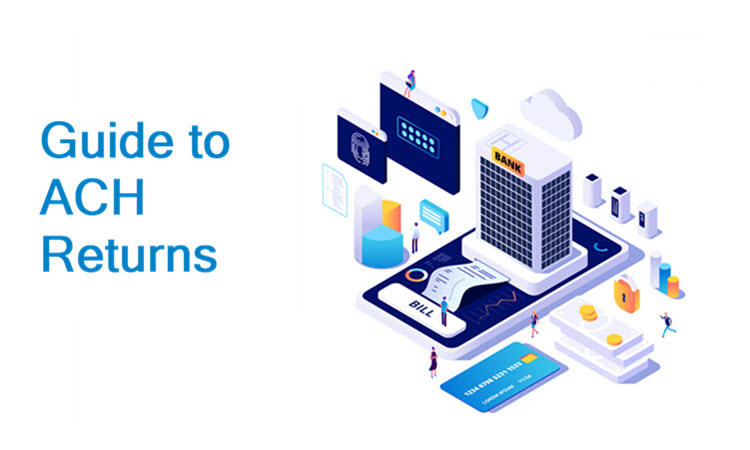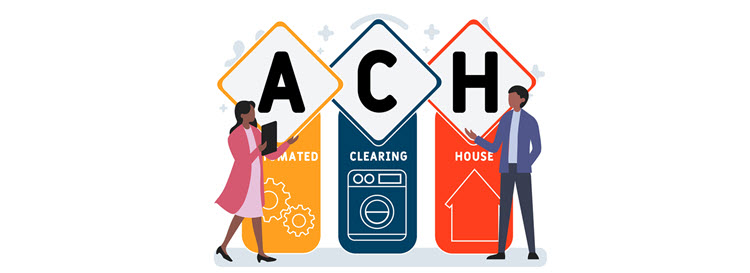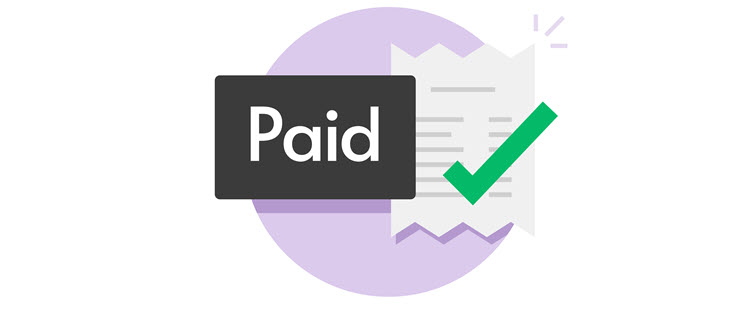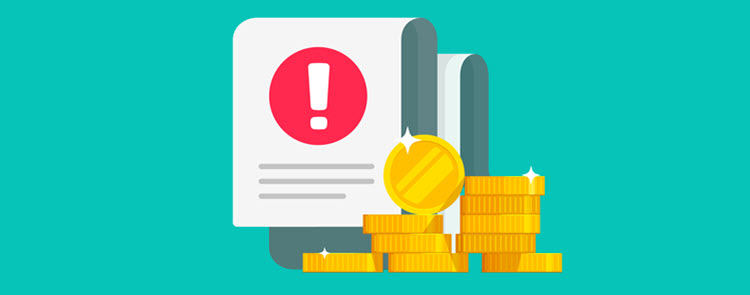
What Are ACH Returns
If the client’s bank notifies the ACH network that the transaction cannot be completed, the money remains on the client’s account.

If the client’s bank notifies the ACH network that the transaction cannot be completed, the money remains on the client’s account.
Depending on the reason for the ACH return, the originator may reinitiate the payment request. Upon receiving an ACH return, it’s possible to reinitiate the ACH payment under codes R01 (Insufficient Funds) and R09 (Uncollected Funds) up to two times within 180 days from the original entry date.
An ACH return under code R09 (Stop Payment) or any related to an unauthorized entry can be reinitiated when the Originator receives the authorization necessary to reinitiate the ACH payment.
In all other cases, when the issue that led to an ACH return is eliminated, originators can make a new payment but not reinitiate the declined one.
Note: Learn more about ACH payments by referring to our article ACH vs. Wire Transfer Comparison.

When the ODFI receives an ACH return from the RDFI, they apply procedures that may incur additional costs for them. They may charge the originator with ACH return fees to cover the expenses.
If the originator and the person/entity whose account has been debited don’t have an agreement on ACH payments, the originator’s ODFI needs to pay the fee. These costs are then forwarded to the originator.
The RDFI can charge the receiver with ACH return fees, as well. If the client has authorized the originator to make a payment request, but they haven’t transferred enough funds to their account, their bank can charge them with a fee.
For the following ACH return codes, the return period is sixty banking days:
For ACH returns under other return codes, the return time frame is two banking days.

Preventing ACH returns increases the speed at which business transactions are conducted. If organizations and individuals repeatedly have issues with their ACH payments, they have to wait to be paid. As a result, they can’t cover their accounts payable on time, which puts their cash flow at risk.
The NACHA has different return ratios and thresholds for different return types. The return rate threshold for unauthorized debit entries (return codes R05, R07, R10, R29, and R51) is 0.5%.
For ACH returns resulting from administrative or account data errors (R02, R03, and R04), the return rate level is 3.0%.
Prevent ACH returns by adhering to the following guidelines:
If you want to speed up the ACH transfer, learn more about same-day ACH payments.
ACH returns and return codes are valuable because they inform all interested parties about errors in the payment procedure.
When the originator and the client resolve the issues addressed in the return, the originator can relaunch the same payment request or demand a new one. Once the ACH network verifies that all the conditions are fulfilled, the new ACH payment is successfully completed.
ACH payments are electronic money transfers between U.S. banks, available to businesses and individuals under the supervision of the National Automated Clearing House Association (NACHA).
When an ACH payment cannot be completed, the sender of an ACH request receives an ACH return.
In this guide, we’re going to explain the concept of ACH returns, the codes they come with, and what to do if you receive an ACH return.

ACH returns are online payment transactions that cannot be completed, due to inaccurate payment information or non-existent or inadequate authorization. There are two parties in every ACH return process:
The originator sends an ACH payment request and the receiver, who either accepts it or rejects it. If the receiver rejects the ACH payment, they send an ACH return to the originator via the relevant ACH platform.
Notifications about returns are sent to originators in the form of ACH return codes.
Learn about the differences between ODFI and RDFI in our article ODFI vs. RDFI: Definitions and Differences.
Every ACH return comes with a certain return code, which consists of the letter R and a two-figure number. Each of these codes has a different reason for the return.
Note: Each return code has a return time frame, a period during which the client may dispute the ACH return in question.
These are some of the most common ACH return codes:
Note: Learn what ACH reversals are and how they differ from ACH returns.

ACH returns occur due to numerous reasons. For instance, when the originator isn’t authorized to debit the client’s account with an ACH payment or when the recipient doesn’t have enough funds, an ACH return is initiated. The same happens when the originator provides inaccurate data.
Let’s say that a merchant wants to debit a client’s account to get paid for the services provided to the client.
If the client’s bank notifies the ACH network that the transaction cannot be completed, the money remains on the client’s account.
Depending on the reason for the ACH return, the originator may reinitiate the payment request. Upon receiving an ACH return, it’s possible to reinitiate the ACH payment under codes R01 (Insufficient Funds) and R09 (Uncollected Funds) up to two times within 180 days from the original entry date.
An ACH return under code R09 (Stop Payment) or any related to an unauthorized entry can be reinitiated when the Originator receives the authorization necessary to reinitiate the ACH payment.
In all other cases, when the issue that led to an ACH return is eliminated, originators can make a new payment but not reinitiate the declined one.
Note: Learn more about ACH payments by referring to our article ACH vs. Wire Transfer Comparison.

When the ODFI receives an ACH return from the RDFI, they apply procedures that may incur additional costs for them. They may charge the originator with ACH return fees to cover the expenses.
If the originator and the person/entity whose account has been debited don’t have an agreement on ACH payments, the originator’s ODFI needs to pay the fee. These costs are then forwarded to the originator.
The RDFI can charge the receiver with ACH return fees, as well. If the client has authorized the originator to make a payment request, but they haven’t transferred enough funds to their account, their bank can charge them with a fee.
For the following ACH return codes, the return period is sixty banking days:
For ACH returns under other return codes, the return time frame is two banking days.

Preventing ACH returns increases the speed at which business transactions are conducted. If organizations and individuals repeatedly have issues with their ACH payments, they have to wait to be paid. As a result, they can’t cover their accounts payable on time, which puts their cash flow at risk.
The NACHA has different return ratios and thresholds for different return types. The return rate threshold for unauthorized debit entries (return codes R05, R07, R10, R29, and R51) is 0.5%.
For ACH returns resulting from administrative or account data errors (R02, R03, and R04), the return rate level is 3.0%.
Prevent ACH returns by adhering to the following guidelines:
If you want to speed up the ACH transfer, learn more about same-day ACH payments.
ACH returns and return codes are valuable because they inform all interested parties about errors in the payment procedure.
When the originator and the client resolve the issues addressed in the return, the originator can relaunch the same payment request or demand a new one. Once the ACH network verifies that all the conditions are fulfilled, the new ACH payment is successfully completed.